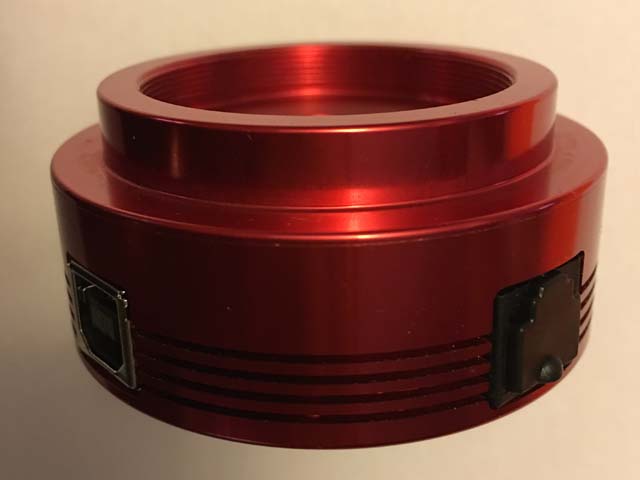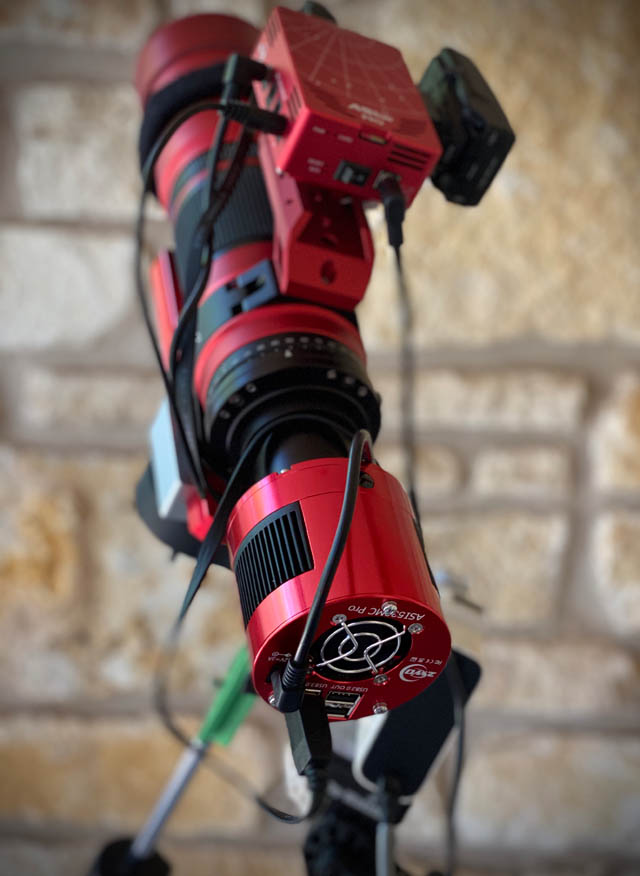- Images
- Blog
- Tools
- Questar
- The Questar telescope
- Questar resource links
- Search for Questar info
- 172mm Focal Reducer
- Afocal adapter for point and shoot camera
- Camera adapter lengths
- Camera adapter threading
- Camera connection
- Camera focusing
- Custom counterweight
- Drift Alignment Joy
- Finder Eyepiece Compatibility
- The Questar Moon 1981
- Questar Powerguide II Battery Life
- Questar Zone, How to Service Videos
- Red Dot finder mount for Questar
- Questar Viewing Table
- Wedge mounts
- White light solar filters comparison
- How to
- Get started in astronomy
- Astro RaspberryPi Camera and kin, the ASIAir and StellarMate
- Blind Smart-phone Equatorial Wedge or GEM Polar Alignment
- Camera phone adapter
- Celestron FirstScope with equatorial tripod mount
- Coat Pocket Astrophotography
- Day-lapse Images of Earthshine on the Crescent Moon
- Dobsonian Carrying Case
- DSO Astrophotography without a Telescope
- DSO imaging without a star tracker
- Estimating image resolution
- Lunar Eclipse Photography
- Moon photography - a dozen ways to shoot the Moon
- Meteor shower photography & planning
- Matching image sensor size to telescope resolution
- Narrow band imaging with color cameras
- Planetary Image Workflow
- Print and Display Astrophotography
- Observing
- Events
- More
- About
- Contact
Astronomical video cameras an introduction
Many astrophotographers use astronomical video cameras rather than consumer cameras. This is an introduction to how they are different from more familiar cameras. The number and complexity of the choices in choosing and setting up an astronomical camera means that these are not for beginners. Astronomical cameras don't make taking astro images easy! They address limitations of consumer cameras for astro images at the cost of significant additional complexity and expense. This is just a quick peek at that complexity. Beginners are better starting off with a standard or mirrorless interchangeable lens camera and many accomplished astrophotographers use nothing else.
Astronomical video cameras are not self contained
Consumer cameras are self contained. In addition to the camera sensor, the camera can store captured images. They include an interface to control taking images and their exposure, and there is a screen for framing and focusing your shots, as well as displaying information and captured images.
Astronomical cameras only have the camera sensor. An external computer or controller is required to set up, take, and store images. They operate as video cameras taking a sequence of images. Exposures may be much longer or shorter than a conventional video camera which has a fixed frame rage.
Kinds of astronomical cameras
There are kinds of astronomical cameras: cameras for planetary images and cameras for deep sky images. There isn't much overlap because the requirements for these two kinds of astrophotography are so different.
Planetary cameras
Planets are bright, small, and evenly lit. Planetary imagers strive for highly detailed images using a technique called lucky imaging. Lucky imaging requires taking hundreds or thousands of images as quickly as possible. Images with the least amount of atmospheric distortion are selected and stacked to produce detailed low noise images. Because planets are small and bright even in high power telescopes, sensors and pixels are small. This makes planetary cameras inexpensive. Once you have a planet in your eyepiece field of view, the much smaller camera field of view can make getting it positioned in the camera's view a challenge.

A good small planetary camera, the ZWO ASI120 MC is shown above.
Bright evenly lit planets don't require large pixels for low noise and high dynamic range like deep sky images. High frame rates that capture more images are more valuable to planetary images. Smaller sensors with fewer small pixels make the most of a telescopes resolution and capture images more quickly. The very short exposure times mean that sensor thermal noise is seldom a limitation, but read noise is very important. High frame rates give imagers more "tickets in the lucky image lottery".
Deep sky cameras
Deep sky images are very different from planetary images. DSOs are often much larger than planets and require larger sensors. Images must capture both dim nebulosity and bright stars. This requires sensor pixels with low noise and high capacity (large dynamic range). Exposure times are long to capture enough photons in the dim areas of the image. Large sensors with large pixels are favored. Thermal noise from the sensor and sky glow is the dominant source of noise, so read noise in the sensor electronics is less important. Calibration images to remove hot and dead pixels and vignetting are important. Thermal electric cooling is very useful. It not only reduces thermal noise but simplifies making temperature sensitive calibration images.

The ZWO 533MC Pro, a medium size, thermo-electrically cooled camera is shown ready for action. You see it with the ASIAIR camera controller which also controls sensor cooling and heating strips to keep dew from forming during long nights. A monochrome DSO camera would also typically have an electronic focuser and filter wheel.
The need for large, low noise, sensors and thermo-electric cooling makes DSO astro cameras more expensive than planetary cameras.
Other considerations
Monochromatic verses one-shot color images
Monochrome cameras are more sensitive and flexible than one-shot color cameras with their fixed Beyer array of RGB filters. Electronically controlled filter wheels and electronic focusers allow automation of target and calibration images with multiple color filters for monochrome cameras.
One-shot color cameras are much simpler to setup and use. Modern filters with multiple narrow-bands can allow efficient capture of narrow band data that used to require monochrome cameras.
Filters
Astronomical cameras are normally used with filters. These include broadband RGB color filters designed to capture color images with monochrome cameras. Broadband light pollution reduction filters that reject wavelengths used by commercial lights while keeping an approximate natural color balance. Narrowband filters that pass wavelengths associated with specific elements such as Hydrogen alpha, Oxygen III, and Sulpher II. If your imaging sessions will be with a single filter, then you can use one that can screw into your imaging train. When your imaging sessions usually include multiple filters, then a filter drawer or electronic filter wheel that allows quick and easy filter changes will be valuable. Different filters my slightly alter camera focus. Automated multiple filter sessions may require an electronic focuser as well
Infrared sensitivity
Emission nebulae have significant data in the near IR that is filtered out in most consumer cameras, but not astronomical cameras. A few consumer cameras are available in astronomical versions with a built in filter that allows the near IR Hydrogen alpha wavelength to be captured. It is also possible to replace the factory supplied filter in others with a filter suitable for astrophotography. These cameras do not render daylight scenes with a natural color balance. Astronomical video cameras capture near IR wavelengths without the need for modification.
Connection and drivers
External computers or controllers are used to control the camera and capture image data. This makes the speed and reliability of the interconnections and software drivers important. Make sure camera drivers are reliably supported for the camera controller you plan to use.
Batteries
Astronomical cameras and their supporting equipment are not self powered like standard consumer cameras. Access to electrical power is a requirement. Batteries must be adequate for long operation at cold temperatures.
Content created: 2020-12-09
Comments
![]() Submit comments or questions about this page.
Submit comments or questions about this page.
By submitting a comment, you agree that: it may be included here in whole or part, attributed to you, and its content is subject to the site wide Creative Commons licensing.

How to
Starter telescopes for beginners
Getting started in astrophotography?
Choose & setup a camera for astrophotography
Astro RaspberryPi Camera and kin, the ASIAir and StellarMate
Blind Smart-phone Equatorial Wedge or GEM Polar Alignment
Celestron FirstScope with equatorial tripod mount
Day-lapse Images of Earthshine on the Crescent Moon
DSO Astrophotography without a Telescope
DSO imaging without a star tracker
Overview & equipment for lunar eclipse photography
Framing and tracking a lunar eclipse
Moon photography - a dozen ways to shoot the Moon
Meteor shower photography & planning
Matching image sensor size to telescope resolution
Narrow band imaging with color cameras
Print and Display Astrophotography


 Lunar Eclipse Photography
Lunar Eclipse Photography